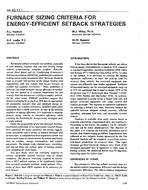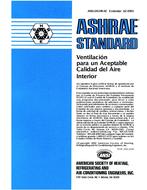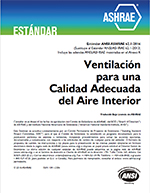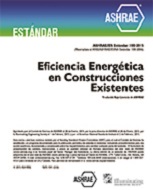Description
Residential setback strategies are common, especially in cold climates, because they can save heating energy without compromising occupant comfort. However, current Sheet Metal and Air Conditioning Contractor’s National Association (SMACNA) guidelines for residential heating system sizing recommended that “furnaces should be sized to provide 100 percent of the design heating load requirements plus any margin that occurs because of product line capacity increments.” These guidelines, if followed, can result in high energy efficiency in residences that are heated at a constant temperature but can severely limit the homeowner’s ability to employ setback. On the other hand, ASHRAE guidelines suggest that furnace oversizing by as much as 6% may be appropriate for acceptable recovery time and minimum energy requirements. As a matter of practice, installers often select equipment that is 100% oversized. In view of the renewed emphasis on energy efficiency, it is important to examine furnace sizing criteria to maximise efficiency while retaining the flexibility for energy-saving strategies such as night setback. Under the sponsorship of the Gas Research Institute, experiments performed at two unoccupied research houses have examined the house dynamics and energy requirements associated with a variety of setback strategies and furnace sizes. A computerised data acquisition system was used at each house to obtain minute-by-minute and hourly data on weather, energy consumption, and comfort parameters. The design loads, thermal mass, oversizing, and step-up times for various types of heating systems were identified for each house. Two new charts show the oversizing required to achieve acceptable setback recovery time at design conditions. The furnace oversizing required to recover from a 10 deg F setback appears to be significantly higher than currently available guidance would indicate. Oversizing of more than 100% appears to be necessary for most houses.
KEYWORDS: boilers, sizing, energy, efficiency, oversizing, domestic, night setback, energy conservation, heating, thermal comfort, regulations, USA, heat load, research, housing, weather, energy consumption, heavy, lightweight, heating
Citation: ASHRAE Trans. 1992, vol.98, Part 1, Paper number AN-92-17-1, 1239-1246, 7 figs., 2 tabs., 12 refs.
Product Details
- Published:
- 1992
- File Size:
- 1 file , 910 KB
- Product Code(s):
- D-18131




